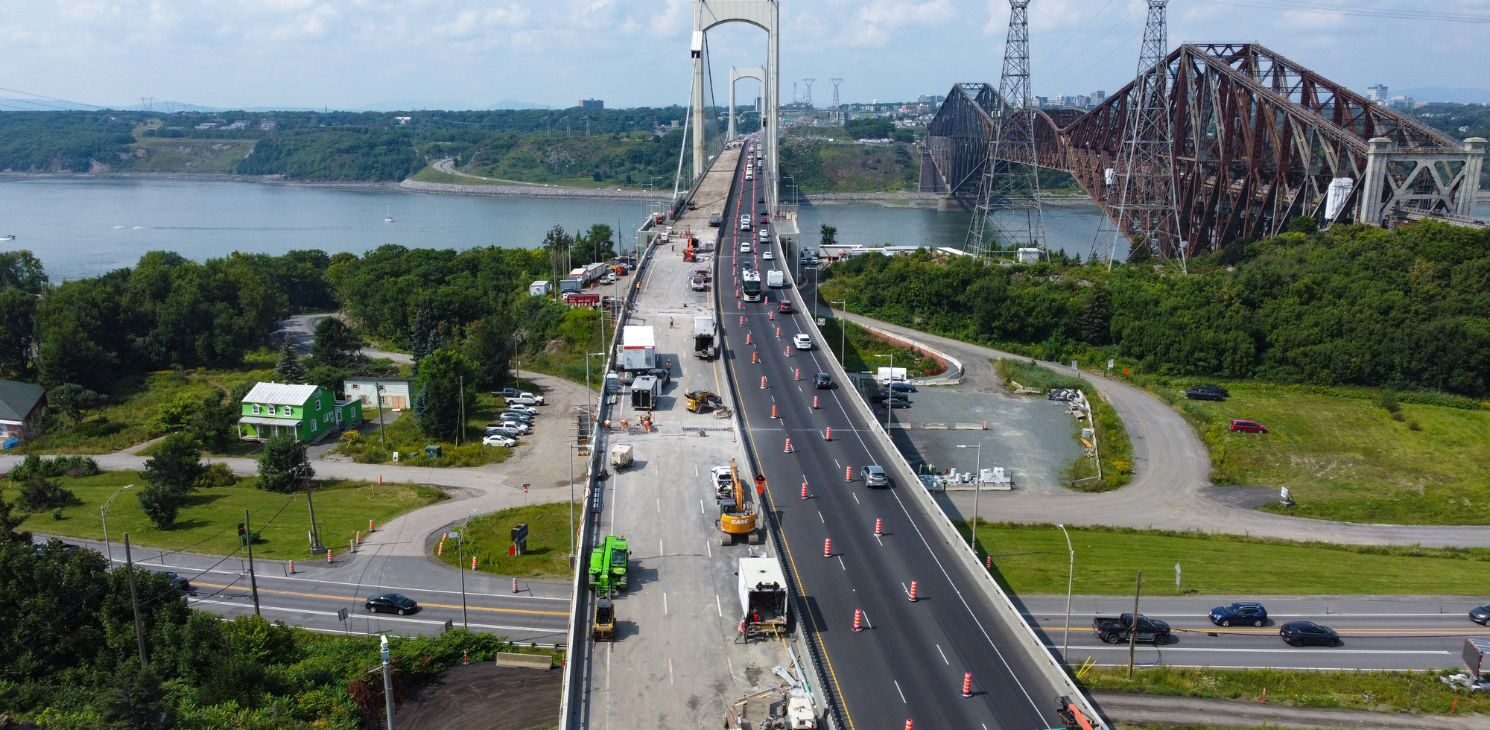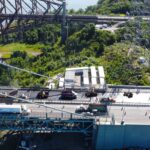In recent years, the Ministère des Transports has implemented accelerated work for the complete rehabilitation of the roadway as well as several works on the structure (cable, security, deck joints, hangers) on the Pierre-Laporte Bridge.
During the waterproofing membrane and asphalt replacement work on the bridge, CIMA+ supervised this site spread over more than 1.5 km and active 24 hours a day, innovating both for the speed of execution and the technical solutions deployed.
Complexity
Because of the strategic importance of the highway and the interest of the general public in this work, this project had to be exemplary at all levels. An absolute requirement of the Department, the timeline to be met was immutable. All work in one direction had to be carried out within a maximum of 7 days, from the closure of the traffic lanes to their reopening. Since several stages were at the mercy of weather conditions, the challenge was daunting. The critical schedule was intimately linked to several contingencies including dew point, wind conditions, ambient temperature and relative humidity.
For CIMA+, the implementation of innovative solutions was a matter of course. Due to the immense impact on the road network that the closures entailed, the schedule was set at a quarter turn. This project required the mobilization of more than thirty specialized resources for monitoring and quality control, and 14 specialized contractors (200 workers). All of them put their shoulder to the wheel in order to achieve this tour de force.
Challenges
Managing and maintaining traffic on a route where more than 125,000 vehicles circulate per day, including about 7,500 heavy goods vehicles, is no easy task. As the closure of four of the six traffic lanes was necessary, CIMA+ was proactive by locally adapting the signage during work according to the Ministry’s requirements in order to minimize the impact on users.
Also, several mitigation measures have been put in place by the various public authorities to limit traffic jams during the work and their harmful effects on the environment. For example, reducing public transit fares, increasing the frequency of bus shuttles and changing schedules for the Québec-Lévis ferry, the only boat link between the two shores, to offer more departures.











